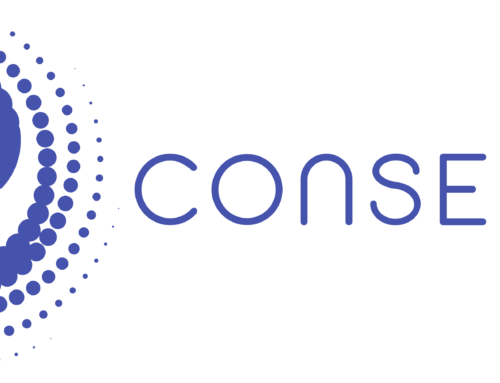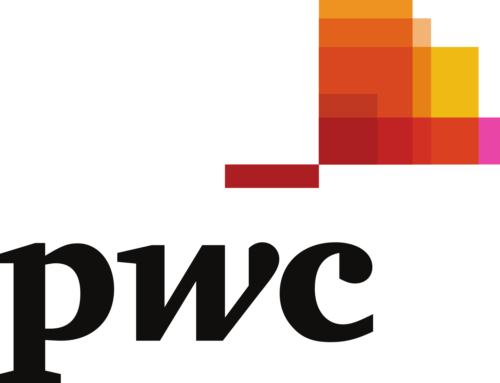[vc_row type=”full_width_background” full_screen_row_position=”middle” equal_height=”yes” content_placement=”top” bg_color=”#ffffff” scene_position=”center” text_color=”dark” text_align=”left” top_padding=”4%” bottom_padding=”7%” overlay_strength=”0.3″ shape_divider_position=”bottom” shape_type=””][vc_column column_padding=”no-extra-padding” column_padding_position=”all” background_color_opacity=”1″ background_hover_color_opacity=”1″ column_shadow=”none” column_border_radius=”none” width=”2/3″ tablet_text_alignment=”default” phone_text_alignment=”default” column_border_width=”none” column_border_style=”solid”][vc_column_text css=”.vc_custom_1525959437185{margin-top: 30px !important;margin-bottom: 30px !important;}”]The Health Information Traceability (HIT) Foundation offers a marketplace that allows individuals to digitize and monetize their health data and trace its usage. It seeks to address two key issues plaguing the healthcare industry: 1) Monopolization of health data leading to siloes and inefficiencies, 2) lack of incentives for individuals to digitize their health data.
In HIT the individual grants access to his data under a smart contract that determines the conditions of the data usage by information seekers such as research institutions or hospitals. HIT allows everybody to get compensated for health information instead of paying others to process or store it. Blockchain technology allows to maintain the privacy of the individual and leaves health data under his sovereignty.
HIT supports the global execution of new or existing business cases for information seekers on top of the HIT platform without the need for intermediaries. HIT builds on the public NEM blockchain that is suited for large scale applications and uses an energy conserving consensus algorithm. HIT is directly supported by the NEM Foundation (https://nem.io/).
Personal health information is a precious good used in medical and market research, or by large internet companies that sell it on to any organization that is willing to buy it. The global Connected Health Market will be worth US$150 billion by 2024 growing at a CAGR of 30%. HIT offers a transparent platform where the creator of data can profit from providing it via smartphone or computer. Information seekers profit from a large pool of potential individuals who have entered a basic set of health-related data when they join the HIT Foundations network.
Upon registering individuals provide basic information about their health status and medication intake via the HIT wallet. For this initial information they receive tokens. In a marketplace, information seekers can offer tokens in exchange for existing information or ask individuals to create new health data such as monitoring their blood pressure or patient-reported treatment outcome. Individuals can give access to additional data from apps, smartwatches and/or existing medical records. Due to its distributed architecture HIT does not need a central database!
Token & Network Effect
Based on smart contracts the individuals receive tokens corresponding to the “value” of the data that is assigned by the information seeker. The smart contract determines the access to the data and the transfer of token under the agreed conditions. For stakeholders that already store data it is attractive to make the individuals’ data shareable if they get a small share of the compensation that is being given by information seekers and/or if they can access additional health data. The individuals can redeem bonuses that are offered by service providers on the platform. HIT aligns network participants to achieve common goals: the growth of the network and the appreciation of the HIT token, which can be exchanged at associated token exchanges.
The HIT token helps to overcome the initial bootstrap problem by adding financial utility when the application utility is low, i.e. individuals get compensated in tokens by HIT to provide their initial personal health information. The earlier they register the more tokens they get. The HIT token enables the Foundation to run open services while serving as an incentive to the network participants. It is essential to the system, as it quantifies the value of health information that cannot be achieved otherwise. Those who acquire tokens can participate in the HIT ecosystem and incentivize individuals to digitize and share health data. A growing network leads to increased token demand and value. In the future HIT tokens can serve as health community tokens.
Token Generation Event
In a Token Generation Event a total of 1 billion HIT tokens (1’000’000’000) will be issued in summer 2018. The number of tokens is justified by the potential number of users and the transaction volume in the healthcare market. Tokens will be delivered to the participants 4 weeks after the token sale ends.
Current Status
Hit Foundation consists of an experienced team of 8 in the field of blockchain and digital health, and execution of large scale projects in regulated environments. It has a strong advisory board and is directly supported by the NEM Foundation and Netcetera, one of the biggest independent software developers in Switzerland.
Hit Foundation was founded in November 2017 and is a member of the Crypto Valley Association in Zug. It takes advantage of the Crypto Valley’s thriving network, knowledgeable experts, and crypto-friendly regulation. In March 2018 the Swiss Federal Supervisory Authority for Foundations officially took HIT Foundation under its supervision, which is mandatory and certifies that HIT Foundation is here to build a sustainable platform.
Together with our technology partners the HIT Foundation is currently developing its MVP which will be released in summer 2018. With our partners in the field of healthcare HIT Foundation is implementing first projects in the last quarter of 2018 before the global rollout starts in 2019. In 2020 HIT foundations eco-system will be the largest platform to access individuals for providing health-related information.[/vc_column_text][/vc_column][vc_column column_padding=”padding-6-percent” column_padding_position=”all” background_color_opacity=”1″ background_hover_color_opacity=”1″ column_shadow=”none” column_border_radius=”none” width=”1/3″ tablet_text_alignment=”default” phone_text_alignment=”default” column_border_width=”none” column_border_style=”solid”][vc_row_inner column_margin=”default” text_align=”left”][vc_column_inner column_padding=”no-extra-padding” column_padding_position=”all” background_color_opacity=”1″ background_hover_color_opacity=”1″ column_shadow=”none” column_border_radius=”none” width=”1/1″ column_border_width=”none” column_border_style=”solid”][image_with_animation image_url=”49999″ alignment=”” animation=”Fade In” border_radius=”none” box_shadow=”none” max_width=”100%”][/vc_column_inner][/vc_row_inner][vc_row_inner column_margin=”default” top_padding=”4%” text_align=”left”][vc_column_inner column_padding=”no-extra-padding” column_padding_position=”all” background_color_opacity=”1″ background_hover_color_opacity=”1″ column_shadow=”none” column_border_radius=”none” width=”1/1″ column_border_width=”none” column_border_style=”solid”][nectar_btn size=”medium” button_style=”regular” button_color_2=”Accent-Color” icon_family=”none” url=”https://cryptovalley.swiss/consensus-2018/” text=”Back to Consensus 2018″ css_animation=”none”][/vc_column_inner][/vc_row_inner][/vc_column][/vc_row]


